RAB31 Targeted by MiR-30c-2-3p Regulates the GLI1 Signaling Pathway, Affecting Gastric Cancer Cell Proliferation and Apoptosis
- PMID: 30534536
- PMCID: PMC6275292
- DOI: 10.3389/fonc.2018.00554
RAB31 Targeted by MiR-30c-2-3p Regulates the GLI1 Signaling Pathway, Affecting Gastric Cancer Cell Proliferation and Apoptosis
Abstract
Background: Gastric cancer (GC), one of the most common cancers worldwide, is highly malignant and fatal. Ras-related protein in brain 31 (RAB31), a member of the RAB family of oncogenes, participates in the process of carcinogenesis and cancer development; however, its role in GC progression is unknown. Methods: In our study, 90 pairs of tissue microarrays were used to measure the levels of RAB31 protein by immunochemistry, and 22 pairs of fresh tissue were used to measure the levels of RAB31 mRNA by quantitative PCR. We also investigated the effects of RAB31 on tumor growth both in vitro and in vivo. Results: RAB31 was overexpressed in GC tissues, and its overexpression predicted poor survival in patients. In a nude mouse model, depletion of RAB31 inhibited tumor growth. In vitro, silencing of RAB31 suppressed cell viability, promoted cell cycle arrest, enhanced apoptosis, and affected the expression of cell cycle and apoptotic proteins; these effects were mediated by glioma-associated oncogene homolog 1 (GLI1). Co-immunoprecipitation and immunofluorescence assays confirmed that RAB31 interacted with GLI1. In addition, luciferase reporter assays and Western blotting showed that microRNA-30c-2-3p modulated the RAB31/GLI1 pathway by targeting the 3'-untranslated region of RAB31. Conclusions: Collectively, these data show that RAB31 is regulated by microRNA-30c-2-3p, and functions as an oncogene in GC tumorigenesis and development by interacting with GLI1. Therefore, targeting the miR-30c-2-3p/RAB31/GLI1 axis may be a therapeutic intervention for gastric cancer.
Keywords: GLI1; RAB31; gastric cancer; miR-30c-2-3p; prognosis; proliferation.
Figures
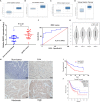
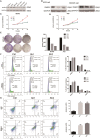
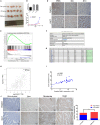
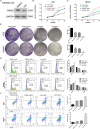

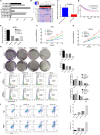

References
LinkOut - more resources
Full Text Sources
Miscellaneous

